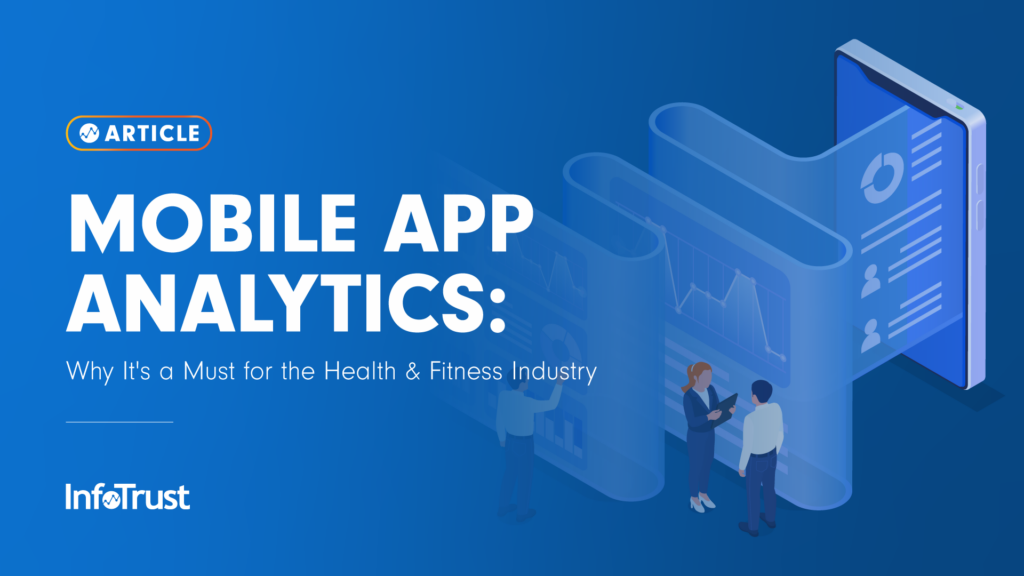It’s no secret that we spend a lot of time on our smartphones. Whether it’s scrolling through social media accounts, checking emails, or even FaceTiming friends and family, our phones are becoming a primary tool that’s used throughout the day.
As mobile technology improves, people are starting to do tasks on their smartphones that would have historically had to have been done on a computer. A simple explanation is that it’s more convenient. Why would I grab my computer to schedule an appointment or watch a video when it’s possible on my smartphone?
The ability for businesses to understand this trend, find a convenient way to engage with customers, and measure success is becoming increasingly important for all industries—but we have noticed a huge trend for health and fitness specifically.
COVID-19 and the Impact on Mobile
The primary shift was back in 2020 when COVID-19 spread throughout the globe. Across all industries, we were trying to find ways to continue business as usual while minimizing the spread of COVID through 1-on-1 human interaction.
Specifically, health industries were the primary organizations focused on this change as they attempted to still aid people while simultaneously trying to protect their staff. One large change included directing users to download their apps to be able to do things that would usually be done in-person or over the phone. Via the app, users were able to find doctors, schedule appointments, receive lab test results, and also order medications without having to come in contact with others. The appointment landscape also shifted as an increase in virtual appointments was now available.
For fitness industries, while gyms were closed there was an uptick in workout content that was added to their apps to continue to add value and increase engagement. Many of these workouts were focused on “at-home” exercises that you could do without equipment. Also, many fitness organizations made it possible to become a member via a mobile app or in-store kiosk in order to reduce personal contact during this time. Finally, we saw an increase in the ability to have a mobile key card on your device to allow you to enter the gym and validate your membership in a touchless way.
Current State: Health and Fitness
Although the pandemic might have pushed health and fitness industries to prioritize mobile app engagement, almost three years later it’s still a focus for many organizations. We’re still seeing consumers book appointments online, digital key cards are being used, and content engagement via applications is still very prominent.
One thing we can all agree on is that smartphones are going to be the primary device used by consumers, so it’s best you have a mobile app strategy in place. Part of this strategy includes defining the business goals you have for your particular application and having a solid platform in place for measurement.
Let’s Talk Strategy
Now that we are all aligned on the direction in which mobile devices are trending, let’s talk about how you can best set up a measurement plan. Similar to websites, it’s critical to have a clear definition of your business goals for the app and have a tech stack in place to allow you to measure app performance.
Business KPIs
Many organizations have a robust (web/app) measurement platform in place but do not have a clear vision of the goals that they want to achieve. These should be defined at the start of the measurement plan to be able to customize your analytics tool to meet the unique needs of your business. In addition, with the upcoming regulations on privacy, we don’t want to be in a position where we are blindly capturing and processing user data without a clear business need defined.
Some questions you should be asking yourself:
- What is the purpose of the mobile application as it relates to our consumers?
- What are the key business goals for the application?
- Is it user engagement, conversion-focused, etc.?
- How might the business goals and KPIs be different across teams? This should be a holistic discussion within your organization. Many times we have one team defining the goals of an application; this silo approach can cause key areas to not be measured.
- How can we prioritize these business goals? Which are more important than others?
- How do we plan on driving traffic to the app?
- Will the app direct users to the website? What does this flow look like and is it user-friendly?
- What development efforts might it take to reach our goals? What teams do we have in place to get there?
Tech
Now that we have a clear vision of our goals, it’s time to talk about tech. As Google Certified Partners, we have a team that specializes in Firebase Analytics and have found it’s a great tool that can help with app development, as well as measurement to help organizations reach their goals.
Here are some of the capabilities that Firebase/Firebase Analytics has to offer:
- Firebase Analytics has a free version
- Real-time database for testing for validation and testing
- Connection with Google Analytics: Ability to access Google Analytics 4 (GA4) for robust mobile app reporting
- Ability to define and measure custom events and custom definitions (parameters)
- Crash reporting to fix bugs quickly
- Audience creation and segmentation
- Integration with other services: BigQuery, Crashlytics, FCM, Firebase Remove Confi, Google Tag Manager
- A/B testing
The key benefit of using Firebase Analytics/GA4 is its ability to customize to the needs of your business. If there are custom data points that you would like to measure, it’s possible to capture them with Custom Events and parameters.
Example: Is the goal of your app to increase appointments? If so, it’s possible to customize the events you are bringing in to measure appointment bookings as well as the flow that a user takes to book an appointment within the app. This allows you to not only measure the business KPI, but also the progression and abandonment throughout the unique flow it takes to get there. If you have a unique goal or KPI in mind, chances are that Firebase Analytics/GA4 can solve for it—whether it be around content engagement or a unique click or flow within the app.
In summary, the tool has the capability to customize its reporting to measure engagement with your unique application and business needs.
Conclusion
While there may be some tactical differences in the goals and measurement strategy for a website vs. mobile application, it’s key for many industries to recognize the shift to mobile and the way that the two work together. Understanding the goals of the business across these two environments and having a strategy in place for improvement is critical given recent trends. If you need any assistance with defining the above strategy or just want to talk about app analytics, our team is always available to help!


